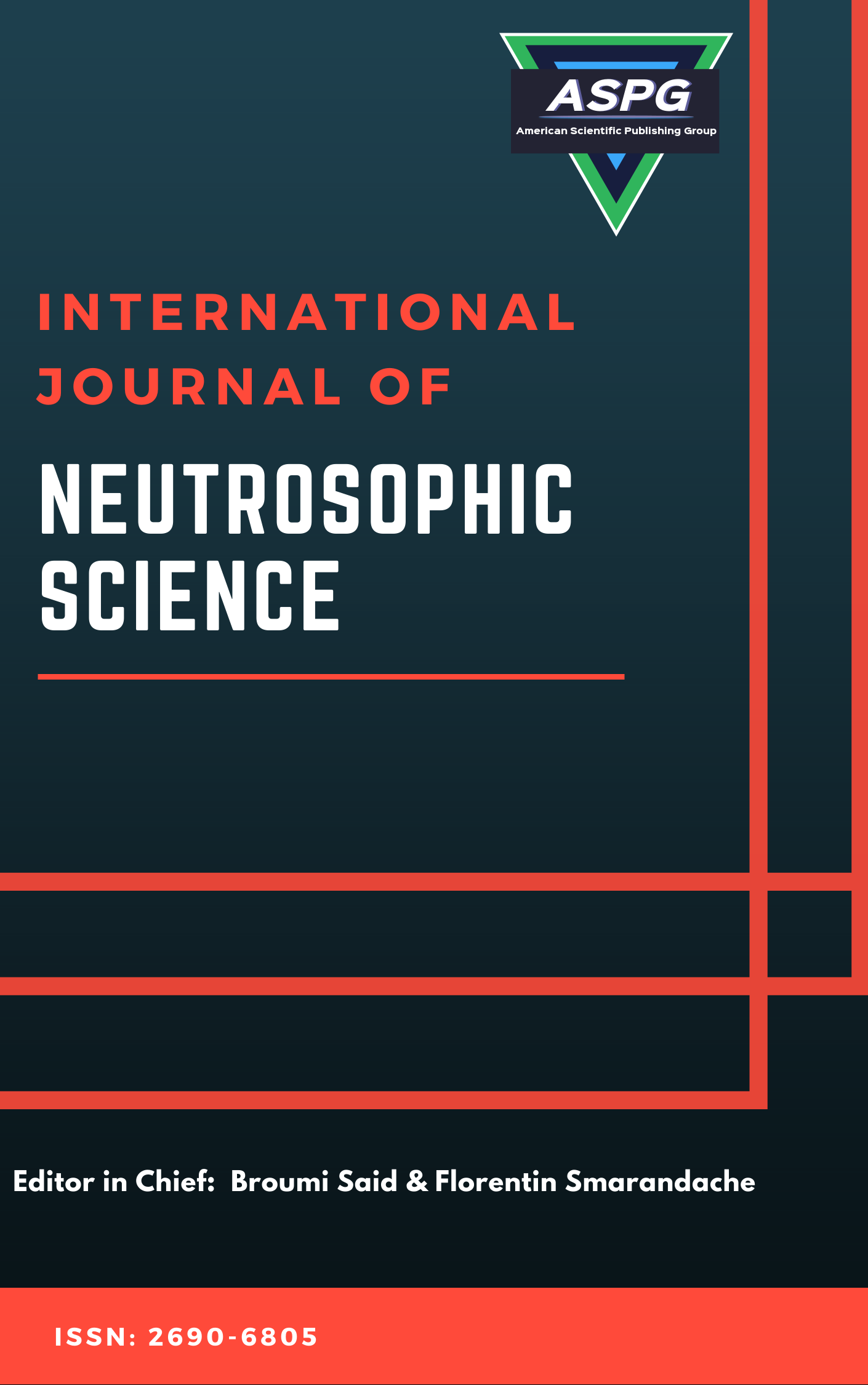

Volume 26 , Issue 2 , PP: 55-66, 2025 | Cite this article as | XML | Html | PDF | Full Length Article
Aiyared Iampan 1 , C. Sivakumar 2 , Neelamegarajan Rajesh 3
Doi: https://doi.org/10.54216/IJNS.260206
This paper explores the fundamental concepts of sub-level subgroups, element orders, normalizers, and centralizers within the framework of neutrosophic group theory. Additionally, it examines quotient groups and the index of a subgroup, extending classical algebraic structures to a neutrosophic setting. Finally, a generalized formulation of Lagrange’s theorem is presented, demonstrating its applicability in the neutrosophic environment and highlighting its implications for uncertain and indeterminate group structures.
Neutrosophic set , Neutrosophic subgroup , Neutrosophic order , Neutrosophic quotient group
[1] N. Ajmal and A. S. Prajapati, Fuzzy cosets and fuzzy normal subgroups, Inf. Sci., 64(1) (1992), 17-25. https://doi.org/10.1016/0020-0255(92)90107-J
[2] A. Al-Odhari, Characteristics neutrosophic subgroups of axiomatic neutrosophic groups, Neutrosophic Optimization and Intelligent Systems, 3 (2024), 32-40. https://doi.org/10.61356/j.nois. 2024.3265
[3] K. T. Atanassov, Intuitionistic Fuzzy Sets, Fuzzy Sets Syst., 20(1) (1986), 87-96. https://doi.org/ 10.1016/S0165-0114(86)80034-3
[4] S. Bhunia, G. Ghorai and Q. Xin, On the characterization of neutrosophic subgroups, AIMS Math., 6(1) (2021), 962-978. https://doi.org/10.3934/math.2021058
[5] S. Bhunia, G. Ghorai and Q. Xin. On the fuzzification of Lagrange’s theorem in (α, β)-Pythagorean fuzzy environment, AIMS Math., 6(9) (2021), 9290-9308. https://doi.org/10.3934/math. 2021540
[6] S. Bhunia and G. Ghorai, An approach to Lagrange’s theorem in Pythagorean fuzzy subgroups, Kragujevac J. Math., 48(6) (2024), 893-906.
[7] V. Cetkin and H. Aygun, An approach to neutrosophic subgroup and its fundamental properties, J. Intell. Fuzzy Syst., 29 (2015), 1941-1947. https://doi.org/10.3233/IFS-151672
[8] A. Iampan, C. Sivakumar and N. Rajesh, Neutrosophic subgroups and neutrosophic normal subgroups of groups, Int. J. Neutrosophic Sci., 26(1) (2025), 283-292. https://doi.org/10.54216/IJNS. 260124
[9] J. N. Mordeson, K. R. Bhutani and A. Rosenfeld, Fuzzy Group Theory, Springer-Verlag, New York, 2005.
[10] A. Rosenfeld, Fuzzy Groups, J. Math. Anal. Appl. 35(3) (1971), 512-517. https://doi.org/10. 1016/0022-247X(71)90199-5
[11] R. L. Roth, A history of Lagrange’s theorem on groups, Math. Mag., 74(2) (2001), 99-108. https: //doi.org/10.1080/0025570X.2001.11953045
[12] F. Smarandache, A unifying field in logics: neutrosophic logic. Neutrosophy, neutrosophic set, neutrosophic probability and statistics (fourth edition), American Research Press, Rehoboth, 2005.
[13] S. Thiruveni and A. Solairaju, Neutrosophic Q-fuzzy subgroups, Int. J. Math. And Appl., 6(1) (2018), 859-866.
[14] R. R. Yager, Pythagorean fuzzy subsets, 2013 Joint IFSA World Congress and NAFIPS Annual Meeting (IFSA/NAFIPS), Edmonton, AB, Canada, 2013, 57-61. https://doi.org/10.1109/ IFSA-NAFIPS.2013.6608375
[15] L. A. Zadeh, Fuzzy sets, Inf. Control, 8(3) (1965), 338-353. https://doi.org/10.1016/ S0019-9958(65)90241-X